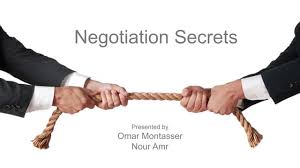
Negotiation in Human Resource Management is not just a discussion, it is a game in itself that should be planned, understood and ascertained with all the stakeholders involved. One of the most challenging examples of HR negotiation is a compensation and benefits dispute between a sheriff’s department and a large municipal county led by a strong mayor. Using the field analysis model—a metaphorical soccer field—HR students can gain invaluable insights into how to plan and execute complex negotiations.
On the playing field are the key negotiators. You, representing the sheriff’s department, face the municipal negotiation team advocating for budget restrictions and political priorities. Your role is to ensure fair compensation for captains and majors, considering step increases, on-call time, and overtime. This is where understanding both economic data and human value comes into play. Strategic communication and realistic proposals are essential to win favorable terms. Learn more about negotiation strategy at StudyCreek.com.
Just like assistant coaches in soccer, legal advisors, HR analysts, and union reps stay on the sidelines. While not active in direct dialogue, their data, advice, and backup support shape your next move. You must actively engage this team in the preparation stage. Their insights on retirement multipliers, post-retirement insurance, and leave time accrual provide the factual backbone for your negotiation logic. To sharpen your HR policy interpretation, visit DissertationHive.com.
The fans in the stadium—media, public watchdogs, and community stakeholders—observe everything. Public sentiment can influence the mayor’s stance or pressurize a hasty compromise. Transparency, clarity, and public communication become tools of influence in this phase. Crafting the message for public understanding is part of the HR negotiator’s role, especially when outcomes affect long-term morale and trust in law enforcement.
No negotiation can be made in the vacuum. The tone and urgency of negotiations are influenced by external forces of political elections, economic downturns, inflation rates or recent safety incidences in the news. Knowing these points, negotiators can design their style, choosing between the following combination of elements: empathy, pragmatism, and being assertive. It is essential to foresee the opposition and tell the counterarguments based on precise measures and legal structures.
One strategic mistake many negotiators make is failing to unify their own team. Conflicting priorities between sheriff command staff and frontline officers can fracture your position. Clarifying internal consensus before stepping onto the field ensures a united, powerful front. Without this, even the best-prepared arguments can crumble under internal dissent.

Field analysis isn’t just a planning tool—it’s a reality map for strategic negotiations. Understanding every player on and off the field equips HR students to lead high-stakes conversations with clarity, confidence, and foresight. If you’re serious about mastering negotiation strategy in public sector HR, take your first step by exploring expert resources on StudyCreek.com and DissertationHive.com.
SAMPLE QUESTION
For purposes of this assignment, assume that you are the negotiator who is tasked with a salary (on call time, step increases, overtime for captains and majors) and benefits (insurance while employed, insurance after retirement, accrual of leave time, retirement multipliers) dispute between a large municipal county with a strong mayor and the sheriff’s department for the county.
You are negotiating the contract on behalf of the sheriff’s office. The purpose of this activity is to give you an opportunity to construct a field analysis on your relationship with a specific other negotiator. This tool should be helpful when negotiators have to consider multiple parties—on their own side and on the other side—who can affect a negotiation outcome, and whose needs and interests must be considered.
The metaphor for this planning tool is a soccer field (see diagram below). On the field would be members of your team and members of the other team (A, B). On the sidelines are backup players, coaches, trainers and other team personnel (C). In the stands are “fans” who are watching the negotiation, members of the media, and other direct observers (D). Finally, the elements outside the stadium–the location of the stadium, the weather, and other “context factors” which can shape how the game evolves and is played (E)
ANSWER
Title: Field Analysis in Public Sector HR Negotiations: A Strategic Approach to Salary and Benefits Disputes
Name:
Subject: Human Resource Management
Instructor: [Insert Instructors Name]
Day and date: July 3, 2025
As the environment of negotiation in the public sector continues to shift, the Human Resource (HR) professionals are forced to work within densely interesting stakeholder environments. This is particularly so when managing the conflicts over salary and benefits within the institutions such as sheriff departments because the compensation issues affect community safety levels, priorities on budget, and mood among workers.
The presented paper employs the field analysis metaphor, which can be compared to a field in soccer, to evaluate the nature of negotiating between a powerful bureaucratic municipal county with a strong mayor and a sheriff deputies department. This is aimed at exemplifying how human resource negotiators can recognize and incorporate powerful players in tackling any dispute within the public sector in a lucrative manner.
In line with the explanation given by Lewicki, Barry, and Saunders (2021), field analysis lays out an organized approach to mapping all the participants in a negotiation, classifying them by their impact both directly and indirectly. This is a tool that assists HR professionals to see the existing relationships, powers, and leverage in a negotiation. The metaphor about soccer field breaks down the stakeholders into five groups:
As the negotiator representing the sheriff’s department, the “field” team includes:
Sheriff and Command Staff, these are the people who determine the priorities in terms of contracts (e.g. multipliers in retirement, overtime amount for the captains and majors).
union Representatives (police benevolent association or other) -They argue on step increases, leave accravings, and post-retirement benefits.
HR Personnel They are the critical sources with regard to providing pay and compensation benchmarks and turnover and cost analysis of insurance offerings.
Such members of the teams are unified in making sure that they march to the tune of having good payment, long term benefits as well as workforce retention in order that they are ready to operate.
Opposing negotiators include:
Strong Mayor and County Administrator– They are worried about the sustainability of the budget and political aesthetics, the play of public accountability.
County Budget Officer – He or she is concerned with ensuring financial equilibrium within his/her fiscal budget and opposes any projected salaries rise.
County Legal Counsel- Makes sure that all negotiations are in accordance with the collective bargaining laws, pension laws and the county policy.
Their primary interest is reduced financial liability, yet ensuring high efficiency of services and evoking trust among people.
In the periphery, or in both sides respectively, one has second players that have an indirect impact on the negotiation process:
HR Consultants – Third party wage comparisons of actuarial reports on retirement benefits.
Employee Assistance Program (EAP) Certified Coordinators Assist wellness aspects of the contract (e.g. stress leave, counseling over traumatic experiences).
Political Advisors -Provide direction on messaging to the voters and the media in the light of how the deal may play.
These actors shape the strategic framework but do not actively negotiate.
Observers include:
Media – Their portrayal can sway public opinion on whether demands are reasonable or excessive.
Taxpayers and Voters – Their perceptions of “government waste” versus “support for law enforcement” heavily influence political outcomes.
Advocacy Groups – Civil liberties organizations or police reform groups may scrutinize certain benefit allocations.
HR negotiators must anticipate and manage these narratives to avoid reputational damage (O’Leary & Bingham, 2019).
The last layer encompasses the parts under the influence that one cannot control:
Economic Conditions– Inflation, recession and shortages of labor affect wage expectations.
Legislative – Retirement coverage laws or health health are legislative changes that influence long term benefit systems.
Public Safety Trends – Rising crime or emergency preparedness shifts political will toward better police compensation.
Strategic negotiators must recognize these forces to time proposals effectively and manage risk (Riccucci, 2017).
Based on the field analysis, a successful negotiation strategy should include:
Salary Proposal Justification: Use benchmarking data from comparable counties to argue for equitable on-call pay and overtime for higher ranks.
Cost-Benefit Reports Long-term: give a current actuarial report demonstrating that competitive benefits lower employee turnover and training expenses.
Media Preparation: Assemble press releases and frequently asked questions to control the story after the consent.
Stakeholder Briefings: Set up briefings with the key watchers and sideline players in order to develop the coalition.
Scenario Planning: Develop contingency plans that are based on the veto or legal challenge.
HR is not purely administrative position, it is crucial to the organization, as it must ensure the compatibility between necessity of operations and compatibility with the financial capabilities and the legal standing of organization.
The public sector is not only about persuasive methods and tools, but it is also a matter of knowing the ecosystem of stakeholders, legal boundaries, and the perception of the general population. The field analysis model provides the HR students and professionals with an active instrument of power relationship mapping and planning on the basis of such mapping. Using this model in the given negotiation case at the level of the sheriff department, HR practitioners will be able to guarantee mutually-weighted, ethical, and proactive outcomes of the contract in a way that complies with stakeholder interests and responsibility to the population.
Lewicki, R. J., Barry, B., and Saunders, D. M. (2021).
Negotiation (8th ed.). McGraw-Hill Education.
O’Leary, R., & Bingham, L. B. (2019). The collaborative public manager: New ideas for the twenty-first century. Georgetown University Press.
Riccucci, N. M. (2017). Public personnel management: Current concerns, future challenges (6th ed.). Routledge.
Delivering a high-quality product at a reasonable price is not enough anymore.
That’s why we have developed 5 beneficial guarantees that will make your experience with our service enjoyable, easy, and safe.
You have to be 100% sure of the quality of your product to give a money-back guarantee. This describes us perfectly. Make sure that this guarantee is totally transparent.
Read moreEach paper is composed from scratch, according to your instructions. It is then checked by our plagiarism-detection software. There is no gap where plagiarism could squeeze in.
Read moreThanks to our free revisions, there is no way for you to be unsatisfied. We will work on your paper until you are completely happy with the result.
Read moreYour email is safe, as we store it according to international data protection rules. Your bank details are secure, as we use only reliable payment systems.
Read moreBy sending us your money, you buy the service we provide. Check out our terms and conditions if you prefer business talks to be laid out in official language.
Read more